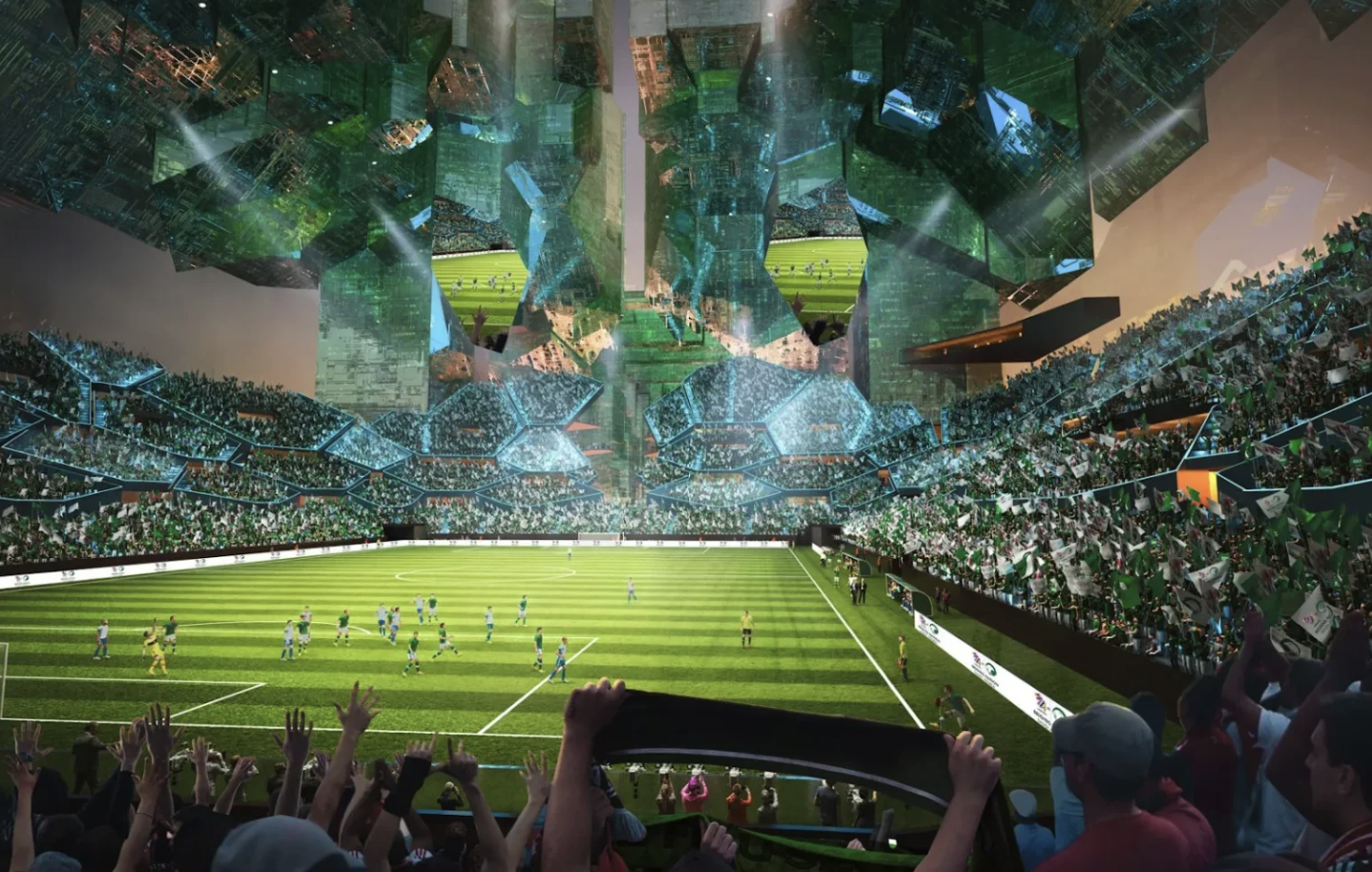From Old Trafford’s regeneration gridlock to Saudi Arabia’s gravity-defying sky stadium and the climate-driven redesigns sweeping global venues, the future of sports infrastructure is being rewritten in real time. But behind the headline-grabbing plans and billion-pound budgets lies a deeper question for brands, architects, and strategists alike: are these stadiums keeping pace with cultural expectations, climate realities, and commercial logic - or are they simply outpacing them?
In this overview, we dissect three major stadium stories shaping the sports and entertainment landscape: Manchester United’s £4.2bn “Wembley of the North,” the heat-proofing revolution in stadium design, and Saudi Arabia’s $1bn suspended stadium in Neom. Together, they offer a glimpse into the escalating ambition - and complexity - of the venues brands now call home.
📊 Supporting Stats
£4.2bn: Projected cost of Manchester United’s new stadium (BBC Sport, 2025)
$20+ billion: Saudi Arabia’s total investment in 2034 World Cup infrastructure (Saudi Ministry of Sport, 2025)
92,000: Jobs projected from United’s development (Manchester Evening News, 2025)
100% renewable: Energy source for Neom Sky Stadium (Vision 2030 Framework)
Year-round heat: 60% of future major tournaments will take place in regions with extreme temperature risks (FIFA Climate Impact Study, 2024)
🧠 Decision: Did It Work?
It depends on which lens you’re using.
Manchester United’s stadium vision is bold, but its execution is faltering. A £400m land dispute has frozen progress, exposing the fragility of large-scale regeneration without locked-down logistics. The promise is huge - economic uplift, tourism, global prestige - but without land, planning permission, or architectural clarity, it currently functions more as a PR play than a viable blueprint.
Saudi Arabia’s Neom Sky Stadium is both a spectacle and a signal. Architecturally, it breaks new ground. Strategically, it’s designed to elevate Saudi's global brand and attract premium partnerships. But it carries high execution risk, from accessibility to ROI scrutiny. As an immersive, net-zero venue built into a future city, it’s not just infrastructure - it’s narrative architecture. The question is whether audiences buy in beyond the visuals.
Heat-resilient design is where commercial sense meets cultural foresight. As climate volatility becomes a certainty, venues embracing passive cooling, adaptive materials, and tech-integrated comfort are setting new standards. This is less about hype and more about long-term viability - for events, for brands, and for safety. It’s the most future-fit of the three stories.
📌 Key Takeouts
What happened:
Manchester United’s £4.2bn stadium hit a land acquisition deadlock.
Saudi Arabia revealed plans for a suspended $1bn stadium in Neom.
Designers globally are adapting stadiums to survive extreme heat.
What worked well:
Saudi’s positioning of infrastructure as soft power and immersive brand space.
Climate-adaptive stadiums balancing tradition with innovation.
The globalisation of venue design as a branding and sustainability tool.
What didn’t land:
United’s land valuation gap threatens to derail timelines and trust.
Neom’s accessibility and practicality remain unproven at scale.
High-tech venues risk perception issues if tech underdelivers.
What this signals:
Stadiums are no longer just sports infrastructure - they’re strategic brand assets.
Climate resilience is fast becoming table stakes for hosting global events.
Audiences expect more than capacity - they demand comfort, values, and experience.
What brand marketers should note:
Get involved early - the best integrations are baked in, not bolted on.
Align with venues that reflect future-forward values, not just scale.
Consider how local infrastructure reflects broader brand positioning in global markets.
🔮 What We Can Expect Next
More stadiums as brand platforms: Future venues will be designed with brand activations, sustainability storytelling, and hybrid experiences in mind from the outset.
Heat-resilient regulation: Expect a rise in global standards mandating temperature-responsive design for major sporting events.
Increased political involvement: Projects like Old Trafford may trigger public-private tensions, especially when delays threaten regional regeneration.
Bigger bets on spectacle: With Saudi setting new architectural benchmarks, other nations may follow suit - leading to an arms race of venue innovation that puts pressure on practicality.
Fan experience as differentiator: Whether sunken in Cairo or suspended in Neom, the venues that win will deliver comfort, immersion, and meaning - not just seats and sightlines.


